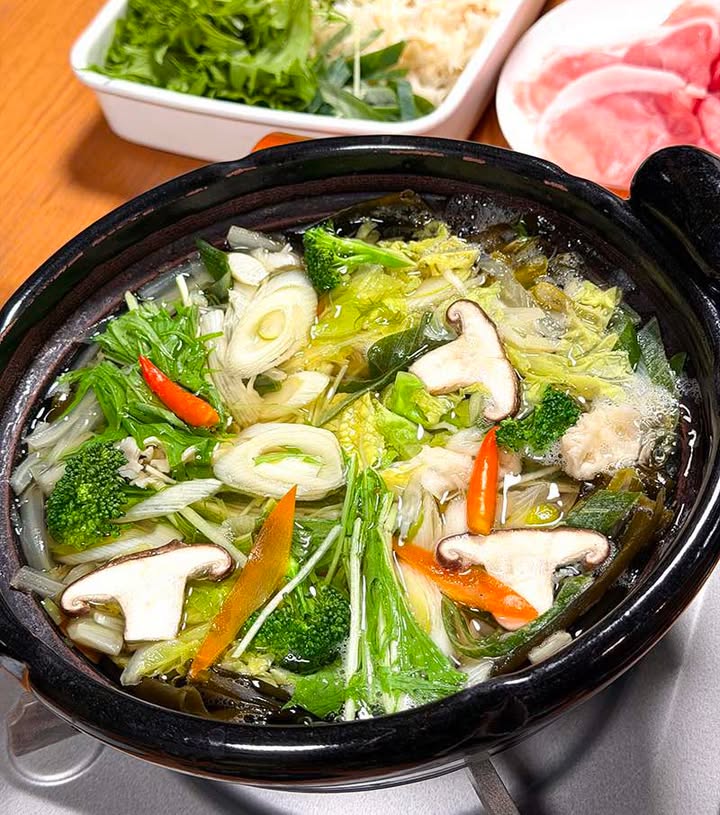Hot pot is one of the most loved
winter meals in Japan. You can add all kinds of ingredients- vegetables, meat, fish, and tofu- and enjoy them gently cooking together in the pot. Hot pot soups vary, from simple kelp dashi to richer with soy sauce- or miso- based broths.
The ingredients themselves bring beautiful flavour to the soup.
winter meals in Japan. You can add all kinds of ingredients- vegetables, meat, fish, and tofu- and enjoy them gently cooking together in the pot. Hot pot soups vary, from simple kelp dashi to richer with soy sauce- or miso- based broths.
The ingredients themselves bring beautiful flavour to the soup.
This is buta-shabu, one of our favourites. Simply cook any chopped vegetables left in the fredge in dashi, add thinly sliced pork, and let it cook until the colour changes. Then roll the vegetables together with the meat. It’s especially delicious with ponzu, a citrus and soy sauce condiment.
Our tip for dashi: kelp as usual- and plenty of garlic!
